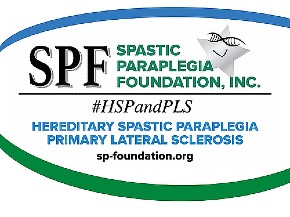What is HSP?
Hereditary Spastic Paraplegia (HSP) is a group of rare, inherited neurological disorders. Their primary symptoms are progressive spasticity and weakness of the leg and hip muscles. Researchers estimate that some 90 different types of HSP exist; the genetic causes are known for about fifty. The HSP incidence rate in the United States is about 20,000 people. The condition is characterized by insidiously progressive lower extremity weakness and spasticity. HSP is classified as uncomplicated or pure if neurological impairment is limited to the lower body. HSP is classified as complicated or complex if other systems are involved or if there are other neurological findings such as seizures, dementia, amyotrophy, extrapyramidal disturbance, or peripheral neuropathy in the absence of other disorders such as diabetes mellitus. Many different names are used for HSP. The most common are Hereditary Spastic Paraplegia (or Paraparesis), Familial Spastic Paraparesis (or Paraplegia), and Strümpell-Lorrain Disease. Others are Spastic Paraplegia, Hereditary Charcot-Disease, Spastic Spinal Paralysis, Diplegia Spinalis Progressive, French Settlement Disease, Troyer syndrome, and Silver syndrome. The disorder was first identified in the late 1800s by A. Strümpell, a neurologist in Heidelberg, Germany. He observed two brothers and their father, all of whom had gait disorders and spasticity in their legs. After the death of the brothers, Strümpell showed through autopsy the degeneration of the nerve fibers leading through the spinal cord. HSP was originally named after Strümpell, and later after two Frenchmen, Lorrain and Charcot, who provided more information.
Here’s an Overview Summary Chart.
Our Impact since our inception...
-
Dollars Raised
Over 12,000,000 dollars for research!













